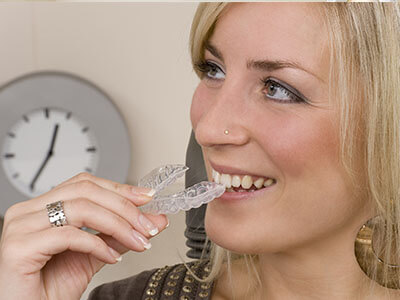Invisalign® offers a modern, discreet route to straighter teeth using clear, removable aligners instead of traditional metal braces. Treatment is planned with advanced digital tools that map tooth movement from start to finish, so patients can see the intended outcome before the first aligner arrives. For many people in Brooklyn and beyond, this combination of predictability and minimal visual impact makes clear-aligner therapy an appealing choice.
How clear aligners move teeth with predictable steps
Contemporary clear-aligner systems begin with a detailed digital scan of your mouth. That scan becomes the foundation for a three-dimensional treatment plan that sequences small, controlled movements across a series of custom-made aligners. Each aligner is worn for a prescribed period before being replaced by the next, gently guiding teeth toward their planned positions.
The stepwise nature of the process helps clinicians manage complex movements with more control than one-off adjustments. Treatment plans can incorporate targeted features — such as attachments or precision cuts — to assist specific types of tooth rotation, extrusion, or translation. That technical precision is what allows clear aligners to be effective for a wide range of alignment issues.
Because every step is simulated in advance, patients and providers can review the progression and make informed choices about treatment goals. This predictability helps set realistic expectations and allows your dental team to monitor progress against a clear roadmap as treatment unfolds.
Watch a concise overview that illustrates the digital workflow and shows how aligners fit into day-to-day life during treatment.
Who is a good candidate for Invisalign-style treatment?
Clear aligners are an excellent fit for many adult patients who want to improve tooth alignment without the aesthetic or lifestyle impact of traditional braces. Motivated teens can also be good candidates when monitored closely by their dental team. In both groups, compliance — wearing aligners as directed — is a key factor in success.
The treatment is capable of addressing a broad spectrum of alignment issues, from mild spacing and crowding to certain bite concerns. However, some highly complex orthodontic cases may still require alternative or adjunctive treatments. Your dentist will evaluate the clinical picture and recommend the most appropriate path.
During the consultation, the team will review oral health, existing restorations, and jaw function to ensure aligners are safe and effective for your unique needs. Clear aligner therapy works best when preceded by healthy gums and a stable dental foundation.
Step-by-step: what to expect through your Invisalign journey
Your pathway begins with an initial consultation and a digital scan or impression. This data is used to craft a custom treatment plan that maps the movement of each tooth and estimates the number of aligners needed. You’ll often see a virtual preview of the projected outcome, which helps you and your provider align on objectives.
Once your first set of aligners arrives, you’ll receive guidance on how long to wear each set and instruction on care and cleaning. Aligners are typically removable for eating and oral hygiene, which simplifies daily maintenance compared with traditional braces. Regular check-ins with your provider ensure the plan is progressing as intended and allow for any refinements.
After the active phase, retention is essential. Your clinician will recommend a retainer strategy to preserve the results and protect your investment in a healthier bite and more confident smile.
Technology and treatment features that improve comfort and control
Modern aligner systems combine materials engineered for comfort with precision manufacturing that delivers predictable fit and force delivery. Clear thermoplastic materials are designed to be thin yet durable, reducing the chance of irritation while maintaining consistent action on the teeth.
Digital treatment planning enables your provider to visualize complex movements and sequence them intelligently. Small auxiliaries — such as attachments bonded to specific teeth — can increase the range of movements the aligners can perform. This technical flexibility is part of why clear aligners have become a mainstream option for many clinical situations.
Alongside materials and planning, ongoing monitoring supports consistent progress. Your dental team will schedule periodic reviews to confirm fit, track movement, and address any concerns so your treatment remains on course and comfortable.
A patient-centered approach at our practice
At the office of Albee Dentalcare, we pair technical expertise with practical guidance to help patients make informed decisions about aligner therapy. Your initial visit focuses on understanding your goals, assessing oral health, and explaining how a digital plan would translate to a real-world timeline and experience.
Throughout treatment, our clinical team emphasizes clear communication and care tailored to your lifestyle. We collaborate with you at each milestone, adjusting recommendations when needed and ensuring you feel confident about daily wear and hygiene routines. Attention to detail — from precise scans to scheduled check-ins — helps deliver predictable results with minimal disruption.
Choosing treatment is a collaborative process. If you’re curious about how clear aligners could work for you, our Brooklyn practice can walk you through the diagnostic steps and what to expect, so you can make a confident decision about moving forward.
Begin with a relaxed, informative consultation
We’ll review your concerns, examine your bite, and show you how clear-aligner treatment addresses the issues you want to correct. This is a no-pressure opportunity to learn about the process and ask questions.
See your plan before treatment starts
Digital scanning and three-dimensional planning allow us to present a visual preview of expected tooth movement. That preview clarifies goals and helps set a clear path forward.
Receive aligners tailored to your mouth
Each set of aligners is fabricated to precise specifications so they fit snugly and deliver gentle, controlled forces. The result is a treatment that prioritizes comfort while guiding tooth movement.
Enjoy ongoing clinical support from start to finish
From the first fitting to the final retention stage, your dentist will monitor progress and provide practical tips to maintain oral health and alignment throughout treatment.
*Invisalign® is a registered trademark of Align Technology, Inc.
Ready to learn more about clear-aligner therapy and how it might fit into your smile goals? Contact us for more information and to arrange a consultation with our team.







